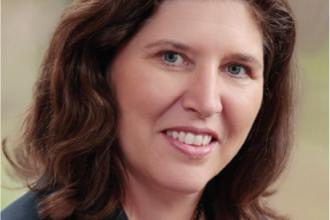Re: CMPA and massage therapy
The Canadian Medical Protective Association has had an opportunity to review the article by Dr Sedergreen that appeared in the September 2000 issue of the BC Medical Journal ("Massage Therapy—A Review" [BCMJ 2000;42(7):342-344]), as well as letters that were published in the December 2000 issue of the Journal written by the president of the College of Massage Therapists of British Columbia [BCMJ 2000;42(10):452] and Dr Sedergreen [BCMJ 2000;42(10)454]. Reference was made in Dr Sedergreen’s December 2000 letter to advice received from the CMPA concerning referrals. We would like to comment on this and related issues.
First, it is not the position of the CMPA that a physician would be vicariously liable for the acts of a registered massage therapist. It is important to draw the distinction between vicarious liability (being held liable for the conduct of another) and direct liability (being held liable for one’s own conduct). Since registered massage therapists are neither employees of a physician nor supervised by a physician, vicarious liability would not likely result for a physician in the event of any negligent treatment by a massage therapist. As the College of Massage Therapists of British Columbia has pointed out, massage therapists in British Columbia are regulated health professionals who would be directly liable for any injury caused to the patient during massage therapy. A physician is not expected to double check or supervise the work of massage therapists or of any other regulated health professionals who provide care to patients.
However, the CMPA has advised physicians generally that care must be taken when making referrals. The concern is that direct liability could be imposed on a physician for a referral he or she makes which results in harm to a patient. A physician is required to meet the standard of care in his or her referral of patient. For example, if a physician had knowledge that the professional to whom he or she was referring a patient was not properly qualified to provide certain care, or if the physician had concerns about the appropriateness of that care or had little knowledge of the efficacy of the treatment, the physician could be held directly liable if a court considered a referral to such a professional as failing to meet the standard of care. Physicians are trained in the process of making referrals to other medical practitioners, but they may not have the same training, experience, or knowledge with respect to the professions outside of medicine. Consequently, it may be more difficult for physicians to meet the standard of care with respect to non-medical referrals. The same concerns exist whether or not the referral is to a regulated or an unregulated non-medical health professional.
Since massage therapists in British Columbia are regulated, it is also not clear why a referral from a physician would be necessary. It may be that the physician has been requested by his or her patient to make a referral in order for the cost of the service to be funded by a third-party paying agency. We would caution against making referrals solely for such a reason. It would seem preferable for patients to independently approach massage therapists or other regulated health professionals to obtain their services, thus eliminating the need for a referral from a physician who may be uncomfortable making such a referral without adequate knowledge of that profession.
We hope that the above has provided some insight into the CMPA’s position on referrals generally. As we have emphasized, the status of massage therapists in British Columbia as a regulated health profession is without doubt. What is of concern is a physician’s direct liability for any referral that the physician makes, and not any possible vicarious liability that might be imputed to the physician for the acts of a massage therapist.
—John E. Gray, MD
CMPA Secretary-Treasurer

